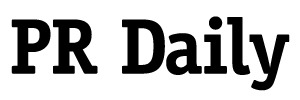Common mistakes in choosing the right podcast for your media relations pitch
The strategy behind the selection.

It can be daunting to pick through thousands of podcasts to find the one that furthers your organization’s goals. Instead of simply picking podcasts that top the charts on Spotify, comms teams need to get more strategic.
“It’s not just about visibility but about ensuring the podcast resonates with your target audience and supports your strategic goals,” said Danielle Hughes, VP of communications at BodyArmor Sports Nutrition, who’ll lead a discussion on this topic during the upcoming PR Daily Conference this May.
Avoid common mistakes in audience targeting
Hughes said a common mistake is choosing podcasts based on personal preference or audience size, rather than strategic fit — a move that can backfire if the show doesn’t align with the target audience.
“There’s a difference between what we personally want to be a part of versus what makes the most sense for our brand – and that’s what has to, at the end of the day, be part of our strategy,” Hughes said.
Before starting to pitch, the comms team needs to develop a firm understanding of the target audience and why they’re the group you want to reach.
For a product launch, Hughes’ team will focus on industry-specific podcasts or trades, while a national campaign featuring athletes or other influencers requires a broader approach.
In 2023, for instance, the BodyArmor brought on Cincinnati Bengals quarterback Joe Burrow as part of a strategy to build broad brand awareness among younger fans. To maximize the news, Hughes and her team approached a variety of entertainment programs, including one of Barstool Sports’ top comedy podcasts, “Sundae Conversation.”
While the audience is largely younger males, it’s an entertainment-focused show and not one exclusively geared toward sports fans.
Host Caleb Pressley talked to Burrow about his off-the-field current events while sprinkling in references to the sports drink throughout the conversation.
Smaller audiences aren’t necessarily a bad thing
When a podcast refuses to share basic audience data, that should raise a “major red flag,” Hughes said. But metrics like downloads or views aren’t the only metrics that matter.
Hughes believes a common mistake brands make is only seeking mainstream podcasts with broad audiences. While those chart-topping shows draw big numbers, their broad appeal can dilute the message.
Niche podcasts that cater to specialized interests often offer a much higher ROI, as they provide access to a smaller but highly engaged and loyal audience.
The 2024 Podcast Pulse Report found that four in five podcast listeners tune into niche programming. Sixty percent said niche podcasts offer more value and deeper insights, while 60% find them more engaging, and 59% feel a stronger connection and loyalty.
“The benefit of the niche audience is, while they are more challenging to reach, the payoff when you connect with them is significant,” Hughes said. “They’re highly engaged and ready to receive your message.”
While many sports drink brands focus almost exclusively on sports-related content, BodyArmor looks to markets like hydration and wellness, which appeal to broader health-conscious consumers, such as Men’s Journal’s “The Everyday Warrior” podcast which recently featured BodyArmor CEO Federico Muyshondt.
In general, BodyArmor has also made a concerted effort to shine a spotlight on select executives within the organization, highlighting significant initiatives. One such interview included the company’s chief marketing officer, Tom Gargiulo, appearing on “CMOWeekly,” which profiles the professional journeys of top marketing professionals.
The program, which has about 10,000 subscribers on YouTube, offered an opportunity to highlight some of the brand’s thought leadership to influencers and others in the energy drink space.
“This is certainly much more niche than something like a Barstool Sports podcast, but it was the right audience for the spokesperson (to share our message),” Hughes said.
The value of a podcast appearance
When it comes to evaluating the success of podcast partnerships, it’s essential to go beyond basic metrics like impressions and focus on deeper measures of engagement.
Hughes admitted that there are challenges when it comes to purely organic measurement when analyzing podcasts as a sales driver. “Listenership and audience demographics are pretty much the best we have right now,” she said.
But Hughes, who ladders up to the BodyArmor marketing team, believes its best to integrate with other departments to gauge success of those earned metrics, whether it’s sales or marketing.
One strategy BodyArmor uses to measure success is integrating landing pages or hashtags into podcast appearances, creating easy ways to track sales conversions.
“If we can amplify an interview with paid support or get a promo code tied to it, we do,” Hughes said. “We try to be as integrated as we can.”
BodyArmor listens closely to consumer feedback and consistently assesses new platforms and formats. While they haven’t focused on Substack in the past, its rise in popularity, particularly as a video platform recently, is something BodyArmor plans to explore more in the near future.
“We are actively listening to consumers to try to meet them where they are,” Hughes said. She then stressed that podcasts should be part of a broader, integrated marketing strategy to ensure content reaches the entire targeted audience.
“It’s not about just making noise but really reaching our audience,” Hughes said. “And that requires being intentional about everything you do.”
The PR Daily Conference will take play May 21-23 in Washington, D.C.
Casey Weldon is a reporter for PR Daily. Follow him on LinkedIn.







